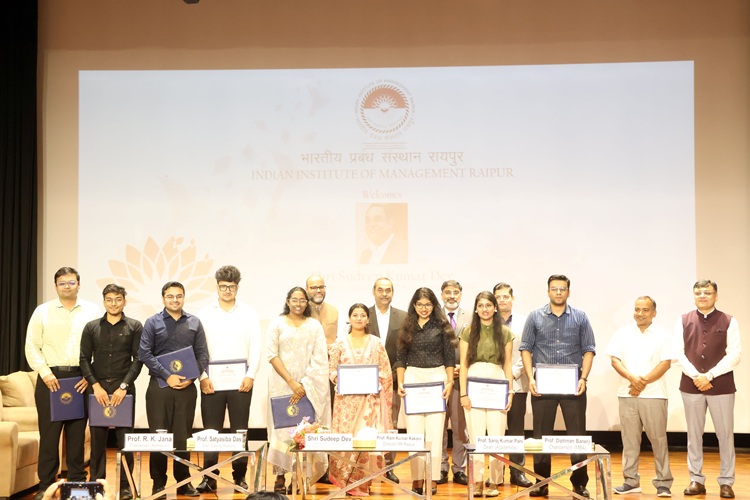By: Mohammad Aftab Alam Siddiqui
The seed of nanotechnology was planted after the unforgettable lecture of great physicist Richard P. Feynman’s in 1959, “There’s Plenty of Room at the Bottom”, and these were the words which made us visualize a new world, which would emerge into reality sooner or later where we would be reliant on small atomic or sub-atomic particles instead of large iron and steel equipment’s.
Japanese scientist, Prof. Norio Taniguchi, came up with the term “nanotechnology”. In mathematical terms 1 nanometer = 10-9 meters.
Technically, Nano science can be defined as the study of phenomena and manipulation of materials at atomic, molecular and macromolecular scales, where properties vary significantly from those at a larger scale. In a nutshell, nanotechnology refers to any form of technology in terms of Nano scale that has applications in the real world. In the early 21st century, Nanotechnology is likely to have a deep impact on our economy and society, comparable to that of semiconductor technology, information technology, or cellular and molecular biology
Some Important Applications of nanotechnology:
Medicine: The medical and biological research groups have exploited the unique properties of Nano materials for various applications such as contrast agents for cell imaging and therapeutics for treating cancer.
Drug delivery: Nanotechnology has been a blessing for the medical arena by delivering drugs to specific cells using Nano particles.
Energy: Storage, manufacturing improvements by dropping materials and process rates and enhanced renewable energy sources are the most advanced nanotechnology projects related to energy.
Diagnostics: Gold nanoparticles tagged with short segments of DNA can be used for detection of genetic sequence in a sample.
Displays: Through using carbon nanotubes (CNT), the production of displays with low energy consumption could be accomplished. Carbon nanotubes can be used as field emitters with extremely high efficiency for field.
MARKET OPPORTUNITIES
Nanotechnology will touch all phases of economy Driving economic prosperity: wages, employment, purchasing; pricing, capital, exchange rates, currencies, markets, supply and demand. Today, nanoparticles are being introduced into many existing materials, making them stronger, improving their conductive properties or exploring new properties in accordance with demand.
Just imagine the emergence of a nano chip that tomorrow would deliver over 50 gigahertz of speed with the processing power of ten supercomputers for the price of a quartz watchand smaller than a key chain. Could you imagine a super-strong and economical material to be used for construction and manufacturing that would abolish the market for steel and plastics. Imagine a medical device that travels through the human body to seek out and destroy small clusters of cancerous cells before they can spread. What might the economic impact on the computer industry, construction and manufacturing industry, health industry be dramatically?
Have a laptop, cell phone or digital camera? Chances are good that its display technology makes use of nano structured polymer films. OLEDs, or organic light emitting diodes, have been used for several years already. Among OLED screen advantages are brighter images, lighter weight, less power consumption and wider viewing angles.
The oil industry and the automotive industry are currently using nanoscale catalysts for refining petroleum and for making catalytic converters used in cars and trucks, allowing substantial costs savings due to low material consumption.
Large-scale water purification plants take out chemicals and eliminate the tiniest bacteria and viruses from dirty water, thanks to nanotechnology.
GLOBAL MARKET ANALYSIS
As per one of the studies, approximately 2million nanotechnology workers will be required worldwide by 2015. They would be distributed across the world regions as follows: 0.8-0.9 million in the US,0.5-0.6 million in Japan, 0.3-0.4 million in Europe, about 0.2 million in the Asia-Pacific region excluding Japan and 0.1 million in other regions. In the today’s market for nanotechnology products, nano devices and nano biotechnology are estimated to be responsible for the largest shares of around 420 and 415 million US$. Materials and tools play a minor role with 145 and 50 million US$. It is estimated that till 2015, all areas are expected to go through substantial increases, e.g. for materials from 145 million up to 340 billion US$. Nano electronics will amount to 300 billion US$, followed by pharmaceuticals, chemical processing and aerospace.
Nanotools play the prominent role on the world market, though with smallest growth rates.
Nanodevices and nanomaterials start on a slightly lower level, but nanodevices increase with a much higher rate. Experts say, business development between 2006 and 2015 will lead to a one trillion market for nanotechnology between 2006 and 2015. Different nanotechnological sub areas, applications and markets, nano enabled products are expected to be responsible for the largest share. The estimates for the whole area of nanoelectronics are around 300billion for 2015, which covers semiconductors, ultra capacitors, nanostorageand nanosensors. The market for nanomaterials estimates can be broken down to some more or less important subareas, amongst which nanoparticles, nanocoatings and lateral nanostructures account for more than 300 billion Euro in all materials around 2010.
Lux Research (2004) estimates a market share for nanotechnology products of 4 % of general manufactured products in 2014, with 100 nanotech in PCs, 85% in consumer electronics, 23 % in pharmaceuticals and21 % in automobiles. This would lead for nanotechnology to an overall share of15 % of the global manufacturing output in 2014. The expected development of the market for nano-enabled drug delivery shows an average annual increase of 50 % between 2005 and 2012. The increase in the market share follows same path, but with slightly lower rates. In 2012,about 4.8 billion US$ will be earned with nanotechnology on the drug delivery market, which would be a market share of 5.2%. If the development continues, this market share will increase to 7% in 2015 and 10% in 2020.
According to above given data and future estimation nanotechnology aspires to be a revolutionary tool for development and up gradation of industries. Nanotechnology has got a hidden potential which can be explored by business czars and prominent industrialists in years to come.
Note : Writer is a Student of B.Tec NanoTechnology at Amity University Noida NCR Delh. He can be reached mohammadaftab.alam@student.amity.edu






0 Comments